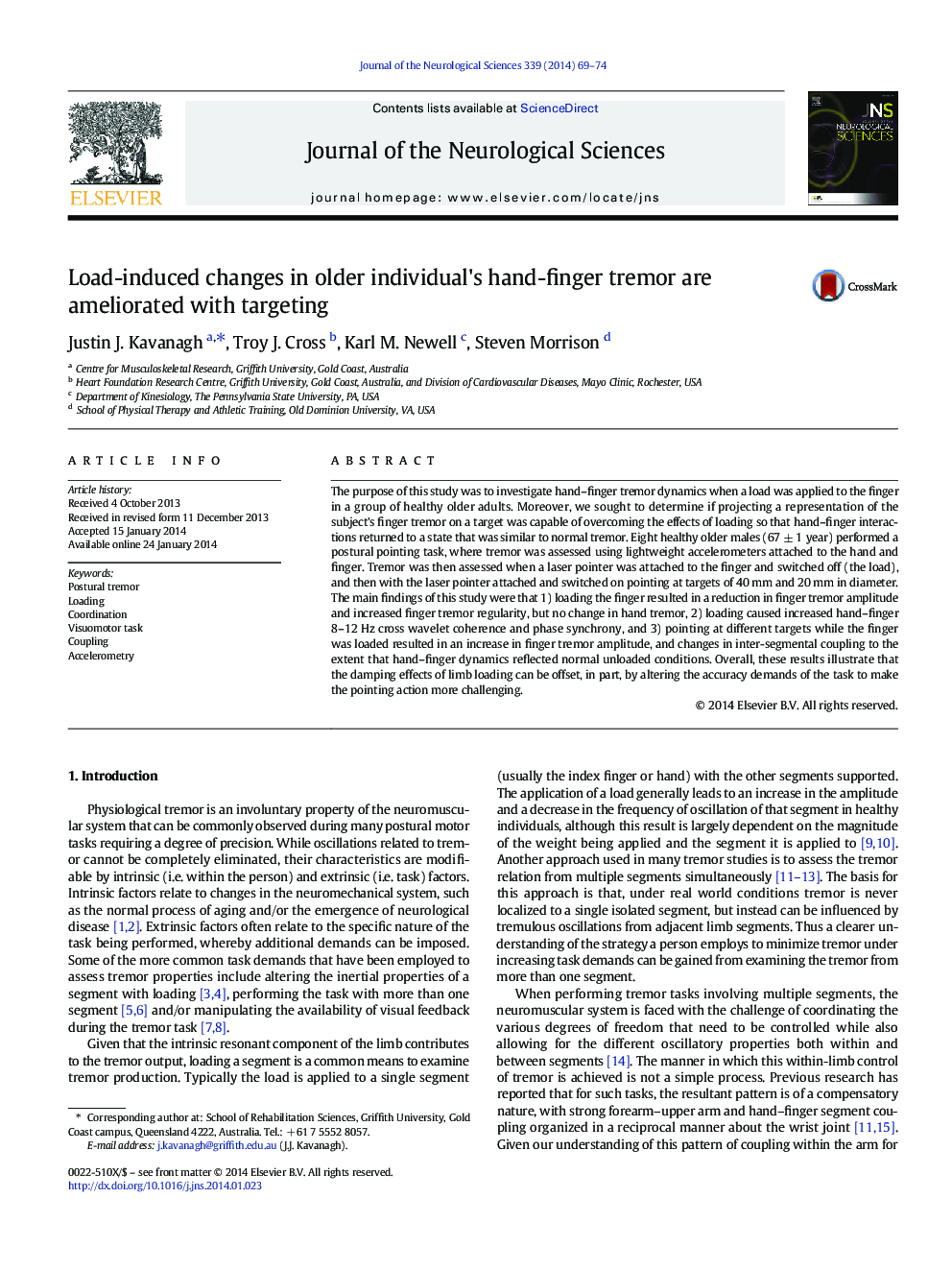| Article ID | Journal | Published Year | Pages | File Type |
|---|---|---|---|---|
| 8277475 | Journal of the Neurological Sciences | 2014 | 6 Pages |
Abstract
The purpose of this study was to investigate hand-finger tremor dynamics when a load was applied to the finger in a group of healthy older adults. Moreover, we sought to determine if projecting a representation of the subject's finger tremor on a target was capable of overcoming the effects of loading so that hand-finger interactions returned to a state that was similar to normal tremor. Eight healthy older males (67 ± 1 year) performed a postural pointing task, where tremor was assessed using lightweight accelerometers attached to the hand and finger. Tremor was then assessed when a laser pointer was attached to the finger and switched off (the load), and then with the laser pointer attached and switched on pointing at targets of 40 mm and 20 mm in diameter. The main findings of this study were that 1) loading the finger resulted in a reduction in finger tremor amplitude and increased finger tremor regularity, but no change in hand tremor, 2) loading caused increased hand-finger 8-12 Hz cross wavelet coherence and phase synchrony, and 3) pointing at different targets while the finger was loaded resulted in an increase in finger tremor amplitude, and changes in inter-segmental coupling to the extent that hand-finger dynamics reflected normal unloaded conditions. Overall, these results illustrate that the damping effects of limb loading can be offset, in part, by altering the accuracy demands of the task to make the pointing action more challenging.
Related Topics
Life Sciences
Biochemistry, Genetics and Molecular Biology
Ageing
Authors
Justin J. Kavanagh, Troy J. Cross, Karl M. Newell, Steven Morrison,
